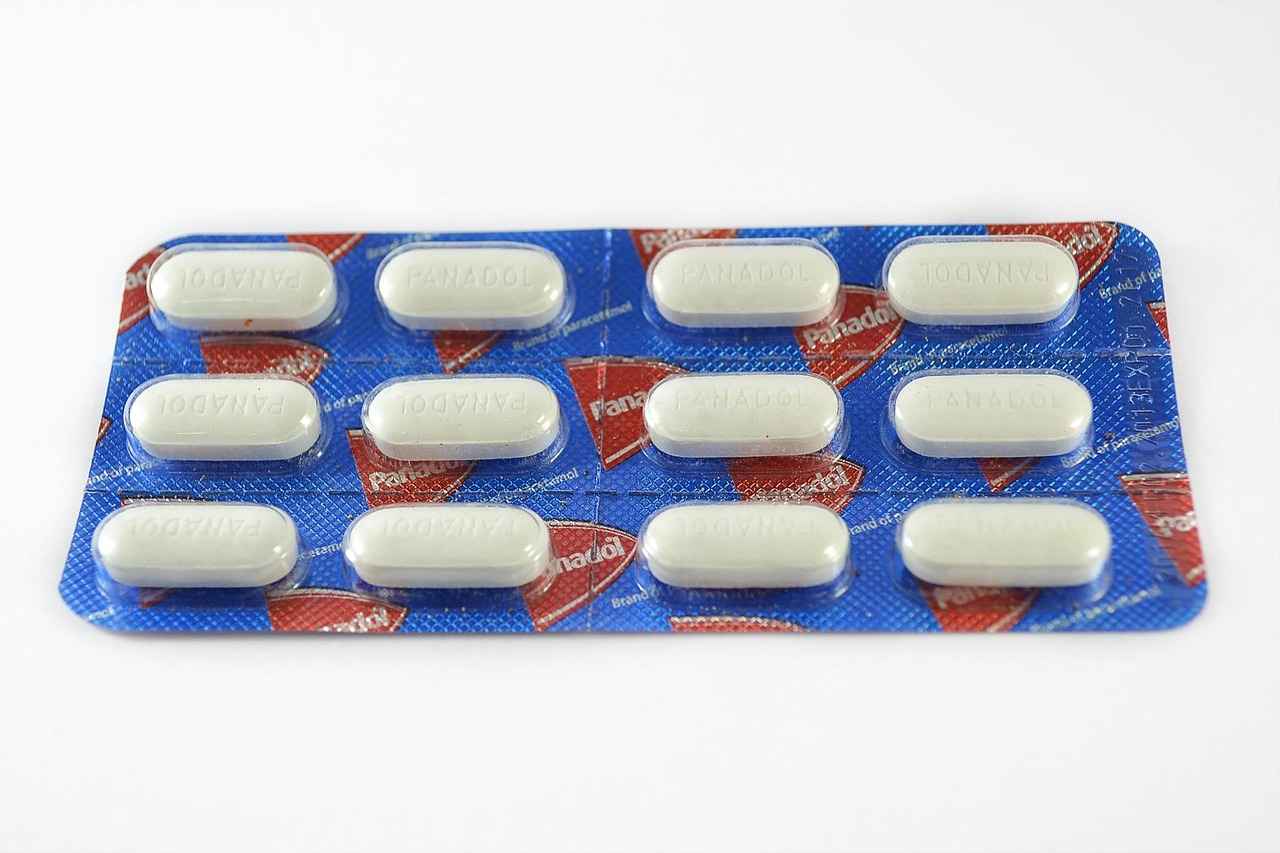Lidocaine is a widely used local anesthetic that provides temporary relief from pain during various medical procedures. Understanding the duration of its effects is crucial for both patients and healthcare professionals to ensure optimal pain management and recovery. This article delves into how long lidocaine typically lasts, the factors affecting its wear-off time, and practical insights for effective use.
Lidocaine is primarily used in dentistry, minor surgeries, and pain management for conditions such as neuropathic pain. It works by blocking nerve signals in the body, providing effective pain relief during procedures. Knowing its applications helps clarify how long its effects typically last in different scenarios.
The duration of lidocaine’s effectiveness can vary based on several factors. Generally, its effects can last from one to several hours. The specific duration depends on the method of administration, dosage, and individual patient characteristics.
Several factors can affect how long lidocaine remains active in the body:
- Injection Site and Method: The location of the lidocaine injection plays a crucial role. For instance, injections in highly vascular areas may wear off faster than those in less vascular regions.
- Dosage and Concentration: Higher doses or concentrations of lidocaine tend to prolong its effects, while lower doses may result in a shorter duration of action.
- Individual Patient Factors: Patient-specific factors such as age, metabolism, and overall health can significantly influence how long lidocaine remains effective.
After receiving lidocaine, patients often experience numbness and reduced pain sensation. It’s important for patients to understand these effects to manage anxiety and set realistic recovery expectations.
While lidocaine is generally safe, some patients may experience side effects such as:
- Dizziness
- Tingling
- Allergic reactions
Awareness of these effects is crucial for patient safety, and patients should be informed about what to look for after administration.
Patients should be aware of when to seek help after lidocaine use. If severe side effects or unusual symptoms occur, such as difficulty breathing or swelling, immediate medical attention is necessary.
As lidocaine wears off, patients may begin to feel discomfort or pain. Effective management strategies can help ease this transition:
- Pain Management Techniques: Utilizing over-the-counter pain relievers or prescribed medications can help manage discomfort as the effects of lidocaine diminish.
- Follow-Up Care Recommendations: Patients should adhere to their healthcare provider’s recommendations regarding follow-up care and when to resume normal activities.
Awareness of how long lidocaine takes to wear off and the factors influencing its duration can empower patients and healthcare providers to make informed decisions regarding pain management. By understanding the expected duration and potential side effects, patients can navigate their recovery with greater confidence and comfort.

What is Lidocaine and Its Common Uses?
Lidocaine is a widely used local anesthetic that provides effective pain relief during various medical procedures. Its ability to numb specific areas of the body makes it a popular choice among healthcare professionals for both minor and major interventions. Understanding the applications of lidocaine is crucial for both patients and providers, as it helps clarify how long its effects typically last in different scenarios.
Lidocaine belongs to a class of medications known as local anesthetics. It functions by blocking nerve signals in the body, effectively preventing the sensation of pain. This medication is commonly utilized in a variety of settings, including:
- Dental Procedures: Lidocaine is frequently administered to numb the gums and surrounding tissues during dental work, making procedures like fillings or extractions more comfortable for patients.
- Minor Surgical Procedures: Surgeons often use lidocaine to anesthetize the area before performing small surgeries, such as biopsies or cyst removals.
- Labor and Delivery: In obstetrics, lidocaine may be used to provide pain relief during labor or to numb the area for an epidural injection.
- Emergency Medicine: Lidocaine is sometimes used in emergency settings to manage acute pain or to facilitate procedures like suturing lacerations.
Understanding the applications of lidocaine helps clarify its significance in medical practice. Its quick onset of action and relatively short duration make it an ideal choice for many procedures requiring localized pain relief.
The duration of lidocaine’s effectiveness can vary based on several factors, including the method of administration, dosage, and the specific area of the body where it is applied. Generally, the effects of lidocaine can last anywhere from one to several hours. For instance, when injected into a highly vascular area, the effects may wear off more quickly compared to less vascular regions.
Several factors can affect how long lidocaine remains active in the body:
- Injection Site: The location of the injection significantly impacts the duration of lidocaine’s effects. Areas with a rich blood supply may allow for faster absorption and a shorter duration of pain relief.
- Dosage and Concentration: Higher doses or concentrations of lidocaine can prolong its effects, while lower doses may lead to a shorter duration of action.
- Individual Patient Factors: Each patient’s unique characteristics, such as age, metabolism, and overall health, can influence how long lidocaine remains effective.
After the administration of lidocaine, patients typically experience numbness and reduced pain sensation in the targeted area. This can be particularly beneficial in surgical or dental settings, as it allows procedures to be performed with minimal discomfort.
While lidocaine is generally considered safe, some patients may experience side effects. Common side effects include:
- Dizziness: Some patients may feel lightheaded after receiving lidocaine.
- Tingling: A tingling sensation in the area of administration is not uncommon.
- Allergic Reactions: Though rare, some individuals may have an allergic reaction to lidocaine, which requires immediate medical attention.
It is crucial for patients to know when to seek help after lidocaine use. If severe side effects or unusual symptoms arise, such as difficulty breathing or swelling, immediate medical attention should be sought.
As the effects of lidocaine begin to wear off, patients may experience discomfort or pain. Effective management strategies can help ease this transition:
- Pain Management Techniques: Over-the-counter pain relievers or prescribed medications can help manage discomfort as the effects of lidocaine diminish.
- Follow-Up Care Recommendations: Patients should adhere to their healthcare provider’s recommendations regarding follow-up care and when to resume normal activities.
By understanding the duration of lidocaine’s effects and the factors influencing it, patients and healthcare providers can make informed decisions regarding pain management, ultimately enhancing the quality of care.

How Long Does Lidocaine Last?
Lidocaine is a widely used local anesthetic that provides effective pain relief during various medical procedures. Understanding the duration of its effects is crucial for both patients and healthcare providers to ensure optimal pain management and recovery. In this section, we will explore the factors that influence how long lidocaine lasts and what patients can expect during and after its administration.
The duration of lidocaine’s effectiveness can vary significantly based on several factors. Generally, its effects can last from one to several hours, depending on the method of administration and dosage. However, it is essential to consider additional variables that can impact this duration.
Several key factors can affect how long lidocaine remains active in the body:
- Injection Site: The location of the injection plays a critical role in determining how long the effects will last. Injections administered in highly vascular areas, such as the arms or legs, may wear off more quickly compared to those in less vascular regions like the abdomen.
- Dosage and Concentration: Higher doses or concentrations of lidocaine can prolong its effects. Conversely, lower doses tend to result in a shorter duration of action. This relationship is vital for effective pain management.
- Patient Characteristics: Individual factors such as age, metabolism, and overall health can significantly influence the effectiveness and duration of lidocaine. For instance, younger patients may metabolize the drug more quickly than older adults.
After receiving lidocaine, patients often experience numbness and reduced pain sensation in the targeted area. This numbness can be beneficial during medical procedures but may also lead to discomfort as the effects begin to wear off. Understanding these effects can help patients manage their expectations and reduce anxiety.
While lidocaine is generally safe, some patients may experience side effects. Common side effects include:
- Dizziness
- Tingling sensations
- Allergic reactions in rare cases
Being aware of these potential side effects is crucial for patient safety and helps ensure timely medical intervention if necessary.
Patients should be informed about when to seek medical attention after lidocaine use. If severe side effects or unusual symptoms occur, such as difficulty breathing or swelling, it is essential to contact a healthcare provider immediately.
As the effects of lidocaine diminish, patients may begin to feel discomfort or pain. Effective management strategies can significantly enhance patient comfort during this transition:
- Pain Management Techniques: Utilizing over-the-counter pain relievers or prescribed medications can help alleviate discomfort as the effects of lidocaine wear off.
- Follow-Up Care Recommendations: Patients should adhere to their healthcare provider’s guidance regarding follow-up care, including when to resume normal activities after lidocaine administration.
In summary, understanding how long lidocaine lasts and the factors influencing its duration is essential for both patients and healthcare providers. This knowledge empowers informed decisions regarding pain management and enhances the overall patient experience.
Factors Influencing Lidocaine Duration
The duration of lidocaine’s effects can vary significantly based on a multitude of factors. Understanding these factors is crucial for both patients and healthcare providers to optimize pain management strategies. Below, we explore the key elements that influence how long lidocaine remains active in the body.
- Injection Site and Method: The location where lidocaine is injected plays a pivotal role in its duration of action. For example, injections administered in highly vascular areas, such as the inner thigh or armpit, may wear off more quickly due to the rapid absorption into the bloodstream. Conversely, injections in less vascular regions, like the lower back, may result in prolonged effects.
- Dosage and Concentration: The amount of lidocaine administered directly correlates with its duration of action. Higher doses or concentrations can extend the anesthetic effects, making them last longer. This relationship is essential for tailoring the treatment to meet individual patient needs, especially in surgical settings.
- Individual Patient Characteristics: Each patient is unique, and several personal factors can influence how long lidocaine remains effective. Age, metabolic rate, body mass, and overall health can all play a role. For instance, older adults or those with certain medical conditions may metabolize lidocaine more slowly, leading to prolonged effects.
- Presence of Other Medications: Concurrent use of other medications can also impact lidocaine’s duration. Some medications may enhance or inhibit the metabolism of lidocaine, altering its effectiveness. It is crucial for healthcare providers to review a patient’s medication history to avoid potential interactions.
- Patient Anxiety and Stress Levels: Psychological factors, such as anxiety or stress, can influence pain perception and the effectiveness of lidocaine. Patients who are more relaxed may experience a more effective anesthetic effect, while those who are anxious may find the effects to be shorter-lived.
In summary, various factors can significantly affect how long lidocaine remains active in the body. By considering the injection site, dosage, individual patient characteristics, other medications, and psychological factors, healthcare providers can better manage pain relief and ensure a smoother recovery for patients. Understanding these elements allows for a more personalized approach to treatment, ultimately enhancing patient care.
Injection Site and Method
The location of the lidocaine injection is a critical factor that directly influences its duration of effectiveness. When lidocaine is administered, its absorption and subsequent wear-off time can vary significantly based on the vascularity of the injection site. In highly vascular areas, such as the inner arm or groin, the blood flow is increased, which can lead to a faster dispersion of the anesthetic into the bloodstream. This rapid absorption often results in a shorter duration of numbness and pain relief.
Conversely, in less vascular regions, such as the lower back or areas with more adipose tissue, the absorption rate is slower. This slower absorption allows for a prolonged effect of lidocaine, enabling patients to experience extended relief from pain. Therefore, the choice of injection site is not merely a matter of convenience but a crucial decision that can impact the overall effectiveness of the treatment.
Additionally, the method of administration also plays a significant role. For instance, lidocaine can be injected using a nerve block technique, where the anesthetic is delivered near a nerve to provide targeted pain relief. This method can extend the duration of lidocaine’s effects compared to a simple infiltration technique, where the anesthetic is injected directly into the tissue.
| Injection Site | Vascularity | Expected Duration |
|---|---|---|
| Inner Arm | High | 1-2 hours |
| Groin | High | 1-2 hours |
| Lower Back | Low | 2-4 hours |
| Thigh | Medium | 2-3 hours |
In clinical practice, healthcare professionals must consider these factors when planning procedures involving lidocaine. The choice of injection site should be tailored to the patient’s specific needs and the nature of the procedure. For example, if a longer duration of pain relief is desired, selecting a less vascular area may be beneficial. Conversely, in situations where quick recovery is essential, a highly vascular area might be more appropriate.
Furthermore, it is essential for patients to communicate openly with their healthcare providers about their pain management needs and any concerns regarding the injection site. Understanding the implications of the injection site can empower patients to make informed decisions about their care, ultimately enhancing their overall experience during medical procedures.
In summary, the injection site and method of lidocaine administration are pivotal in determining the duration of its effects. By carefully selecting the appropriate site and technique, healthcare providers can optimize pain management outcomes for their patients.
Dosage and Concentration
Lidocaine, a widely used local anesthetic, is essential in various medical procedures for effective pain management. Understanding the relationship between its dosage and concentration is crucial for both healthcare providers and patients. This article delves into how dosage affects the duration of lidocaine’s effects, ensuring optimal pain relief while minimizing potential risks.
The duration of lidocaine’s action is significantly influenced by its dosage and concentration. Higher doses or concentrations of lidocaine generally lead to a prolonged duration of effect. This means that patients may experience extended numbness and pain relief, which can be beneficial during lengthy procedures. Conversely, lower doses tend to result in a shorter duration of action, making it essential for healthcare providers to choose the appropriate dosage based on the specific needs of the procedure and the patient.
Choosing the right dosage of lidocaine is vital for effective pain management. If the dosage is too low, patients may experience inadequate pain relief, leading to discomfort during and after the procedure. On the other hand, excessively high doses can increase the risk of side effects, such as toxicity or allergic reactions. Therefore, a thorough understanding of the dosage-response relationship is essential for healthcare providers to tailor the anesthetic approach to individual patient needs.
- Type of Procedure: The nature and duration of the medical procedure can dictate the required dosage of lidocaine.
- Patient Characteristics: Factors such as age, weight, and overall health can influence how a patient metabolizes lidocaine.
- Injection Site: The location of the injection can also affect how quickly the drug is absorbed and how long its effects last.
Administering incorrect dosages of lidocaine can lead to a range of complications. Underdosing may result in insufficient pain relief, causing anxiety and discomfort for the patient. In contrast, overdosing can lead to serious side effects, including:
- Cardiovascular Issues: High levels of lidocaine can affect heart rhythm.
- CNS Effects: Symptoms such as dizziness, confusion, or seizures may occur.
- Allergic Reactions: Some patients may experience allergic responses, necessitating immediate medical attention.
To optimize the use of lidocaine, healthcare providers should adhere to the following guidelines:
- Patient Assessment: Conduct thorough evaluations to determine the appropriate dosage based on individual patient factors.
- Monitoring: Monitor patients closely during and after administration to identify any adverse reactions promptly.
- Education: Provide patients with information about what to expect during and after the procedure, including potential side effects.
In summary, understanding the impact of dosage and concentration on lidocaine’s duration is crucial for effective pain management. By tailoring the dosage to individual needs and monitoring patients closely, healthcare providers can enhance the safety and efficacy of lidocaine administration, ensuring a positive experience for patients undergoing medical procedures.
Individual Patient Factors
When considering the effectiveness of lidocaine, it is crucial to recognize that individual patient factors play a significant role in determining how long the anesthetic remains effective. These factors include age, metabolism, and overall health, each of which can influence the pharmacokinetics of lidocaine.
- Age: As individuals age, their bodies undergo various physiological changes that can affect drug metabolism. Older patients may experience a slower clearance of lidocaine due to decreased liver function and altered blood flow, resulting in a prolonged duration of action.
- Metabolism: The rate at which lidocaine is metabolized can vary significantly from person to person. Factors such as genetic variations, liver health, and the presence of other medical conditions can impact how quickly the body breaks down and eliminates the drug. For example, patients with liver impairment may retain lidocaine longer, necessitating careful monitoring.
- Overall Health: A patient’s general health status, including the presence of chronic illnesses such as heart disease or diabetes, can also influence lidocaine’s effectiveness. These conditions may affect circulation and overall drug absorption, leading to variations in how long the anesthetic lasts.
Furthermore, individual responses to lidocaine can be influenced by body weight and composition. Patients with higher body fat percentages may experience different drug distribution, potentially affecting the duration of lidocaine’s effects. Additionally, hydration levels and electrolyte balance can also play a role in drug metabolism.
Understanding these individual patient factors is essential for healthcare providers when determining appropriate dosages and administration methods for lidocaine. Personalized care is vital to ensure that patients receive the most effective pain management tailored to their unique physiological profiles.
In clinical practice, it is important for healthcare professionals to assess these factors thoroughly during pre-procedure evaluations. By doing so, they can make informed decisions regarding lidocaine use, optimizing outcomes while minimizing potential risks.
Moreover, educating patients about the potential influence of their unique characteristics on lidocaine’s effectiveness can help set realistic expectations regarding pain relief and recovery times. This understanding fosters better communication between patients and providers, enhancing the overall care experience.
In conclusion, recognizing and addressing the individual patient factors that affect lidocaine’s duration of action is essential for effective pain management. By adopting a personalized approach, healthcare providers can improve patient outcomes and ensure that lidocaine is used safely and effectively in various medical settings.

What to Expect After Lidocaine Administration?
After receiving lidocaine, patients often have questions about the effects they may experience during the recovery period. Understanding these effects is crucial for managing expectations and reducing anxiety. This article provides a comprehensive overview of what to expect after lidocaine administration, including common sensations, potential side effects, and tips for effective recovery.
Following the administration of lidocaine, patients typically experience numbness in the targeted area. This sensation can be unsettling for some, as it may lead to a temporary loss of feeling. Additionally, patients may notice a reduction in pain sensation, which is the primary goal of the anesthetic. Understanding these sensations can help patients feel more at ease during their recovery.
The duration of numbness can vary widely among individuals. Generally, patients may expect numbness to last anywhere from one to several hours, depending on various factors such as the dosage of lidocaine used and the area of administration. It’s essential for patients to monitor their sensations and understand that as the numbness wears off, they may gradually feel a return of sensation.
- Dizziness: Some patients report feeling lightheaded or dizzy after receiving lidocaine.
- Tingling: A tingling sensation may occur as the anesthetic begins to wear off.
- Allergic Reactions: Though rare, some individuals may experience allergic reactions, which can manifest as rash or swelling.
Being aware of these potential side effects is vital for patient safety. If any side effects become severe or concerning, patients should seek medical attention promptly.
Patients should be vigilant for any unusual symptoms following lidocaine administration. If they experience severe dizziness, difficulty breathing, or any signs of an allergic reaction, it is crucial to contact a healthcare provider immediately. Understanding when to seek help can prevent complications and ensure a safe recovery.
As the effects of lidocaine begin to diminish, patients may start to feel discomfort or pain in the treated area. Here are some effective strategies to manage this transition:
- Over-the-Counter Pain Relievers: Medications such as ibuprofen or acetaminophen can help alleviate discomfort.
- Prescription Medications: In some cases, healthcare providers may prescribe stronger pain relief options.
- Cold Compresses: Applying a cold compress to the area can help reduce swelling and numbness.
These strategies can enhance patient comfort and facilitate a smoother recovery process.
Patients are encouraged to adhere to their healthcare provider’s recommendations regarding follow-up care. This may include information on when to resume normal activities and any specific care instructions for the treated area. Staying informed can help patients navigate their recovery effectively.
In conclusion, understanding what to expect after lidocaine administration can significantly enhance the patient experience. By being aware of sensations, potential side effects, and effective management techniques, patients can approach their recovery with confidence and clarity.
Common Side Effects
Common Side Effects of Lidocaine
Lidocaine, a widely used local anesthetic, is generally considered safe for most patients. However, like any medication, it can cause side effects in some individuals. Understanding these potential reactions is crucial for ensuring patient safety and comfort during and after medical procedures.
While many patients tolerate lidocaine well, some may experience mild to moderate side effects. The most frequently reported side effects include:
- Dizziness: Some patients may feel lightheaded or dizzy after receiving lidocaine. This sensation can be unsettling but often resolves quickly.
- Tingling or Numbness: As lidocaine works to block nerve signals, patients may experience temporary tingling or numbness in the area where it was administered. This is usually expected and diminishes as the medication wears off.
- Allergic Reactions: Although rare, some individuals may have an allergic reaction to lidocaine, resulting in symptoms such as rash, itching, or swelling. In severe cases, this could lead to anaphylaxis, a life-threatening condition requiring immediate medical attention.
- Headache: Post-procedure headaches can occur, possibly due to the stress of the procedure or the effects of the anesthetic.
- Nausea: Some patients may feel nauseated after lidocaine administration, which is often temporary.
Being aware of potential side effects is essential for patient safety. Patients should be informed about what to expect after receiving lidocaine, as this knowledge can help alleviate anxiety and prepare them for any sensations they may experience. Furthermore, recognizing adverse reactions early can lead to prompt medical intervention if necessary.
While most side effects of lidocaine are mild and transient, certain symptoms warrant immediate medical attention:
- Severe Allergic Reactions: If a patient experiences difficulty breathing, swelling of the face or throat, or a rapid heartbeat, they should seek emergency care.
- Persistent Dizziness or Confusion: If dizziness does not improve or is accompanied by confusion or other concerning symptoms, it is essential to consult a healthcare provider.
- Unusual Symptoms: Any unexpected or severe reactions should be reported to a healthcare professional for further evaluation.
For those who experience mild side effects, there are several strategies to help manage discomfort:
- Rest: Taking time to rest can help alleviate dizziness and fatigue.
- Hydration: Staying hydrated may help reduce nausea and support overall recovery.
- Over-the-Counter Medications: Pain relievers, such as acetaminophen or ibuprofen, can help manage headaches or other discomforts.
In conclusion, while lidocaine is a valuable tool for pain management, understanding its potential side effects is vital for patient safety and comfort. By being informed and prepared, patients can navigate their recovery more effectively and seek assistance when necessary.
When to Seek Medical Attention
After receiving lidocaine, it is crucial for patients to be aware of their body’s responses and know . Lidocaine is generally safe, but like any medication, it can lead to adverse reactions in some individuals. Understanding the symptoms that warrant immediate medical care can significantly enhance patient safety and comfort.
Patients should be vigilant for severe side effects that may arise after lidocaine administration. These can include:
- Severe dizziness or lightheadedness: If you feel faint or unsteady, this may indicate a serious reaction.
- Difficulty breathing: Any shortness of breath or wheezing should be treated as an emergency.
- Swelling: Noticeable swelling of the face, lips, or throat could signal an allergic reaction.
- Severe headache: A sudden, intense headache may also indicate complications.
- Confusion or agitation: Changes in mental status are serious and should not be ignored.
In addition to severe side effects, patients should be aware of unusual symptoms that may not be immediately alarming but still require attention. These include:
- Persistent numbness: If numbness lasts longer than expected, it’s essential to consult a healthcare provider.
- Prolonged pain: If pain returns or worsens after the numbness wears off, this may indicate that the underlying issue has not been resolved.
- Rash or itching: Skin reactions can develop and should be assessed to rule out allergic responses.
It is advisable to seek medical attention if you experience any of the following:
- Symptoms that worsen: If any symptoms escalate or new symptoms develop, do not hesitate to contact your healthcare provider.
- Delayed reactions: Some reactions may not appear immediately. If you notice any unusual changes hours or days after administration, it’s best to reach out for advice.
- Inability to manage side effects: If over-the-counter medications or home remedies do not alleviate discomfort, professional guidance is necessary.
Effective communication with healthcare providers is essential. Patients should feel empowered to discuss their concerns, symptoms, and any reactions they may be experiencing. Keeping a detailed record of symptoms can aid in diagnosis and treatment. Always inform your provider about:
- All medications: Include prescription, over-the-counter, and herbal supplements.
- Allergies: Any known allergies should be disclosed to avoid complications.
- Medical history: Share relevant medical history that may influence treatment decisions.
In summary, being informed about the potential side effects of lidocaine and knowing when to seek medical attention is vital for patient safety. By recognizing severe and unusual symptoms, patients can ensure timely intervention and better outcomes following lidocaine administration.

How to Manage Lidocaine’s Wear-Off Effects?
When undergoing medical procedures requiring local anesthesia, many patients experience the effects of lidocaine. As the anesthesia begins to wear off, it is common for patients to start feeling discomfort or pain. This transition can be challenging, but understanding effective management strategies can significantly enhance patient comfort and ease the recovery process.
As lidocaine’s effects diminish, the nerves that were temporarily blocked begin to regain sensation. This process can result in varying levels of discomfort or pain, depending on the individual and the nature of the procedure performed. The return of sensation is a natural part of recovery, but it can be uncomfortable for many patients.
To mitigate discomfort as lidocaine wears off, patients can employ several pain management techniques:
- Over-the-Counter Pain Relievers: Medications such as ibuprofen or acetaminophen can be effective in managing mild to moderate pain. Always consult with a healthcare provider to determine the appropriate medication and dosage.
- Prescription Medications: In cases where over-the-counter options are insufficient, healthcare providers may prescribe stronger pain relievers. These medications can provide more effective relief during the recovery period.
- Cold Compresses: Applying a cold compress to the affected area can help reduce inflammation and numb discomfort. This method is particularly useful immediately after the anesthesia wears off.
After receiving lidocaine, it is crucial for patients to adhere to their healthcare provider’s follow-up care recommendations. This may include:
- Monitoring Symptoms: Keeping track of any unusual symptoms or severe pain can help healthcare providers make informed decisions about further treatment.
- Resuming Activities: Patients should wait for their healthcare provider’s advice on when to resume normal activities, as doing so too soon may exacerbate discomfort.
- Hydration: Staying hydrated can aid in the recovery process and help the body metabolize medications more effectively.
Effective communication between patients and healthcare providers is essential. Patients should feel empowered to discuss any concerns regarding pain management and recovery. Understanding what to expect can alleviate anxiety and help set realistic expectations for the recovery process.
While mild discomfort is normal after lidocaine wears off, patients should be aware of when to seek medical attention. Signs that warrant immediate consultation include:
- Severe or persistent pain that does not improve with over-the-counter medications.
- Signs of allergic reactions, such as rash, swelling, or difficulty breathing.
- Unusual symptoms that were not discussed during the initial consultation.
In conclusion, managing the effects of lidocaine as it wears off is crucial for patient comfort. By utilizing effective pain management techniques, adhering to follow-up care recommendations, and maintaining open communication with healthcare providers, patients can navigate this transition more smoothly. Understanding these strategies not only enhances the recovery experience but also empowers patients to take an active role in their care.
Pain Management Techniques
When lidocaine begins to wear off, many patients may experience a resurgence of discomfort or pain. This transition can be challenging, but understanding effective can significantly improve the recovery experience.
After receiving lidocaine, patients may feel a sense of relief initially, but as the effects diminish, it is crucial to have a plan in place to manage any returning pain. Proper pain management not only enhances comfort but also aids in a quicker recovery. Here are some strategies to consider:
Utilizing over-the-counter (OTC) pain relievers can be an effective way to manage discomfort as the effects of lidocaine wane. Medications such as:
- Ibuprofen – This nonsteroidal anti-inflammatory drug (NSAID) helps reduce inflammation and alleviate pain.
- Acetaminophen – Often recommended for mild to moderate pain, it can be a suitable option for those who cannot take NSAIDs.
These medications can be taken as directed on the packaging or as advised by a healthcare provider. It’s essential to monitor the dosage to avoid any potential side effects.
In some cases, healthcare providers may prescribe stronger medications to manage pain effectively. These could include:
- Opioids – For severe pain, opioids may be prescribed, but they should be used with caution due to their potential for addiction.
- Muscle Relaxants – If muscle tension is contributing to discomfort, these can help alleviate that issue.
Always follow the healthcare provider’s instructions when using prescribed medications to ensure safety and effectiveness.
In addition to medications, several non-pharmacological techniques can aid in managing pain. These methods can be particularly beneficial in conjunction with medication:
- Cold Compresses – Applying a cold pack to the affected area can help numb the pain and reduce swelling.
- Heat Therapy – After the initial swelling has subsided, using heat can relax muscles and improve blood flow.
- Relaxation Techniques – Practices such as deep breathing, meditation, or gentle yoga can help manage pain by reducing stress and promoting relaxation.
Engaging in light physical activity, as recommended by a healthcare provider, can also assist in pain management. Gentle movements can prevent stiffness and encourage circulation, which is essential for healing. Activities like walking or stretching can be beneficial. However, it is crucial to listen to your body and avoid overexertion.
After lidocaine administration, maintaining open communication with your healthcare provider is vital. If pain persists or worsens, it is important to report this to ensure appropriate adjustments can be made to your pain management plan. Regular follow-up can help tailor the approach to your specific needs.
Managing pain effectively as lidocaine wears off is essential for a smoother recovery process. By utilizing a combination of OTC pain relievers, prescribed medications, non-pharmacological techniques, and maintaining communication with healthcare providers, patients can navigate this transition with greater ease and comfort.
Follow-Up Care Recommendations
After receiving lidocaine, it’s essential for patients to adhere to their healthcare provider’s recommendations regarding follow-up care. This includes understanding when to resume normal activities, as well as recognizing how to manage any lingering effects of the anesthetic. Here are some important considerations to keep in mind:
- Timing for Resuming Activities: Patients should consult with their healthcare provider to determine the appropriate time to return to regular activities. This may vary based on the procedure performed and individual health factors.
- Monitoring Side Effects: It’s crucial to monitor for any side effects that may arise after lidocaine administration. Common side effects include dizziness, tingling, or localized swelling. If these symptoms worsen or new symptoms develop, patients should seek medical attention immediately.
- Hydration and Nutrition: Staying hydrated and maintaining a balanced diet post-procedure can aid in recovery. Patients should follow any dietary advice given by their healthcare provider, especially if they are advised to avoid certain foods or beverages.
- Pain Management: As the effects of lidocaine begin to wear off, patients may experience discomfort. Using over-the-counter pain relievers, as recommended by the healthcare provider, can help manage this discomfort effectively.
- Follow-Up Appointments: Attending scheduled follow-up appointments is vital. These visits allow healthcare providers to assess healing progress and address any concerns related to the procedure or recovery.
It is also important for patients to communicate openly with their healthcare providers about their recovery experience. This includes discussing any concerns or questions that may arise during the recovery process. By maintaining an open line of communication, patients can ensure they are receiving the best possible care tailored to their needs.
Additionally, patients should be aware of the potential for delayed reactions to lidocaine. While most side effects occur shortly after administration, some individuals may experience delayed symptoms. Understanding this possibility can help patients remain vigilant and proactive in their care.
Finally, patients should remember that recovery is a personal journey. Factors such as age, overall health, and the specific procedure performed can influence recovery time and experiences. Therefore, following personalized care plans and recommendations is crucial for a successful recovery.
In summary, adhering to follow-up care recommendations after lidocaine administration is essential for ensuring a smooth recovery. By understanding when to resume normal activities and being aware of potential side effects, patients can take an active role in their healing process. Always keep in mind that your healthcare provider is your best resource for guidance and support during this time.

Conclusion: Understanding Lidocaine’s Duration for Better Care
The duration of lidocaine’s effects is a crucial aspect of pain management that both patients and healthcare providers should understand. Knowing how long lidocaine takes to wear off can significantly influence decisions regarding treatment plans and recovery expectations. This article delves into the duration of lidocaine’s effects, the factors that influence its wear-off time, and practical insights for better pain management.
Lidocaine is a widely used local anesthetic that provides effective pain relief during various medical procedures, including dental work, minor surgeries, and dermatological treatments. Its ability to block nerve signals makes it an essential tool in pain management, allowing for smoother procedures and quicker recovery times.
The duration of lidocaine’s effectiveness can vary, typically lasting from one to several hours. This variability is influenced by multiple factors, making it essential for both patients and healthcare providers to understand these elements.
Several key factors can affect how long lidocaine remains active in the body:
- Injection Site: The location of the injection plays a significant role. Injections in areas with high blood flow can lead to a quicker wear-off time, while those in less vascular regions may last longer.
- Dosage and Concentration: Higher doses or concentrations of lidocaine generally prolong its effects, whereas lower doses result in a shorter duration. This relationship is critical for effective pain management.
- Individual Patient Characteristics: Factors such as age, overall health, and metabolic rate can influence how long lidocaine remains effective. Personalized care is vital for optimal outcomes.
After receiving lidocaine, patients typically experience numbness and reduced pain sensation. Understanding these effects can help manage anxiety and set realistic expectations for recovery.
While generally safe, some patients may experience side effects, including:
- Dizziness
- Tingling
- Allergic Reactions
Being aware of these potential side effects is crucial for ensuring patient safety and comfort.
It is important for patients to know when to seek help after lidocaine use. Severe side effects or unusual symptoms should be reported to a healthcare provider immediately to ensure proper care.
As lidocaine begins to wear off, patients may start to feel discomfort or pain. Effective management strategies can enhance comfort during this transition:
- Pain Management Techniques: Over-the-counter pain relievers or prescribed medications can help alleviate discomfort as the effects of lidocaine diminish.
- Follow-Up Care Recommendations: Patients should adhere to their healthcare provider’s recommendations regarding follow-up care, including when to safely resume normal activities.
By understanding the duration of lidocaine’s effects and the factors that influence it, patients and healthcare providers can make informed decisions regarding pain management. This knowledge empowers patients to better navigate their recovery journey and enhances the overall effectiveness of treatment plans.
Frequently Asked Questions
- How long does the effect of lidocaine last?
The effects of lidocaine typically last between one to several hours. The exact duration can vary depending on factors such as the injection site, dosage, and individual patient characteristics.
- What factors influence how quickly lidocaine wears off?
Several factors can impact how long lidocaine remains effective, including the site of injection (more vascular areas may wear off faster), the dosage administered, and the patient’s unique characteristics like age and metabolism.
- What should I expect after receiving lidocaine?
After lidocaine administration, you can expect numbness and reduced pain sensation in the treated area. It’s also important to be aware of potential side effects like dizziness or tingling.
- When should I seek medical attention after lidocaine use?
If you experience severe side effects, unusual symptoms, or if the numbness lasts longer than expected, it’s crucial to seek medical attention promptly.
- How can I manage discomfort as lidocaine wears off?
To manage discomfort, consider using over-the-counter pain relievers or any medications prescribed by your healthcare provider. This can help ease the transition as the effects of lidocaine diminish.




